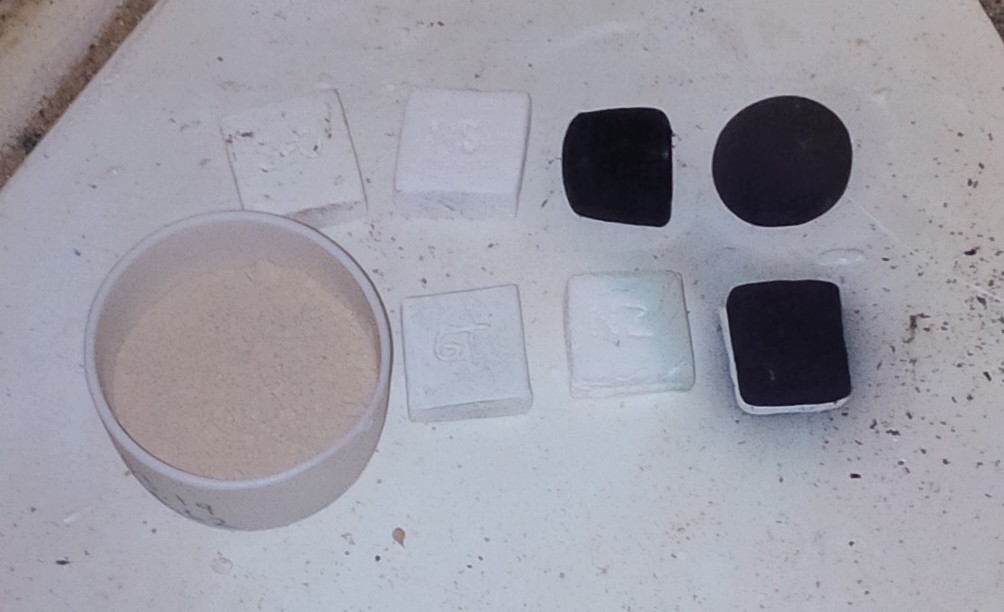| Monthly Tech-Tip | No tracking! No ads! |
Dimpled glaze
A ceramic glaze defect characterized by tiny holes in the surface, often too small to see with the naked eye.
Key phrases linking here: dimpled glaze, orange peel, dimpling - Learn more
Details
'Dimpled' glaze surfaces are those that have tiny holes that do not go down to the ceramic underneath (a pinhole). These holes look as if they were produced by a pin-point being pressed into the surface of the glaze when its melt is very stiff. They are often associated with pinholes. Dimples are small and thus not always immediately evident, closer examination is needed, it may even be necessary to hold a piece up to the light at just the right angle. Dimples are usually caused by firing too quickly or by particulates in the body and/or glaze (that generate gases during firing).
Industrial producers pay great attention to the particle sizes of their body and glaze materials and process them to whatever size is necessary to assure defect-free glazes (even wet ball milling, filter pressing and spray drying if needed). Generally, the fewer carbonate and gas-generating materials are in body and glaze, the less chance of having this problem. Finer-grained bodies, slower firing cycles, longer hold times and slower cooling will also reduce the problem. More dense glaze laydown is better. Glazes that contain a higher percentage of frit will be less likely to pit. Glossy glazes pit less than matte ones. Glazes having a high melt fluidity will pit less also.
Related Information
How can you best tell if a base glaze is prone to pinholing with your body?

This picture has its own page with more detail, click here to see it.
Testing for pinholes and dimples is often best done using a transparent glaze over a large surface and looking at the surface in the light. In this case, an open bowl is used. Heavy pieces like this are difficult to fire evenly and encourage under fired areas where pinholes are more likely to appear.
LOI test of common materials flags copper carbonate

This picture has its own page with more detail, click here to see it.
These are pure samples (with 2% binder added) of (top left to bottom right) strontium carbonate, nepheline syenite, cobalt carbonate, manganese dioxide, bentonite (in bowl), 6 Tile kaolin, New Zealand kaolin and copper carbonate. I am firing them at 50F increments from 1500F and weighing to calculate loss on ignition for each. I want to find out at what temperature they are gassing (and potentially bubble-disrupting the glaze they are in or under). Notice how the copper is fuming and spitting black specks on the shelf, this happens right around 1500F (these stains on the shelf darkened considerably when the kiln was fired higher). Yet copper carbonate does not melt and fully decompose until much higher. No wonder it is implicated in cases of glaze blistering and bubbling.
Links
| Glossary |
Ceramic Glaze Defects
Ceramic glaze defects include things like pinholes, blisters, crazing, shivering, leaching, crawling, cutlery marking, clouding and color problems. |
| By Tony Hansen Follow me on        |  |
Got a Question?
Buy me a coffee and we can talk

https://digitalfire.com, All Rights Reserved
Privacy Policy
